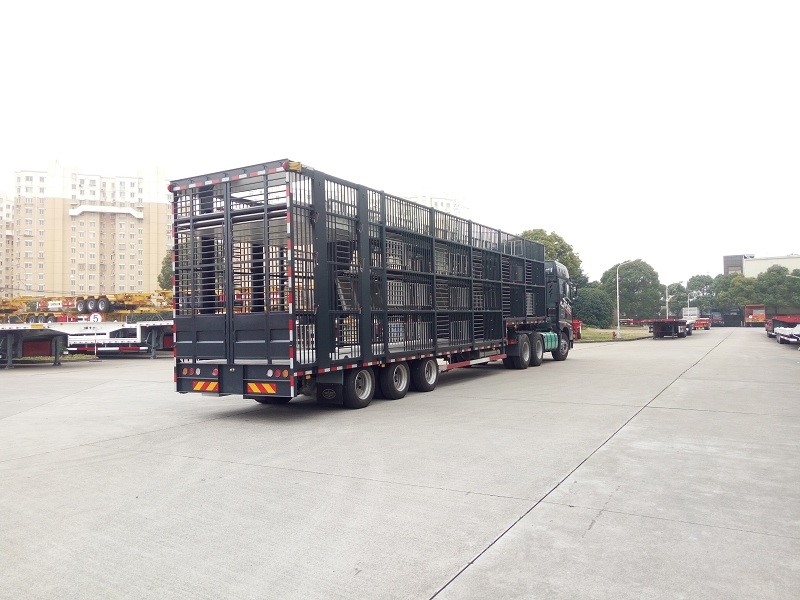A livestock trailer also known as an animal transport trailer is used for the transportation of cattle, horses and pigs.
The construction of livestock trailer bodies is usually of side walls that have tubular truss-type support structures closed in through the use of spaced-parallel and horizontal slats that are fastened to one another.
Some of these types of trailers normally come with a removable floor located somewhat at the middle section hence offering separate lower and upper decks for loading the animals.
During the loading of the upper deck, a considerable weight is well-concentrated and balanced at the top. To make this possible, the trailer is usually of a sturdy and rigid construction in order to prevent swaying over under such loading conditions.
1. Different Types of Livestock Trailers
Livestock trailers come in different types. Each of the different designs is made to serve a specific function. There are trailers of a low-middle load capacity whereas there are those that can take very many animals at ago.
You can choose among these different types based on your need. Here are some of the trailers you will find out there in the market.
One. Enclosed type
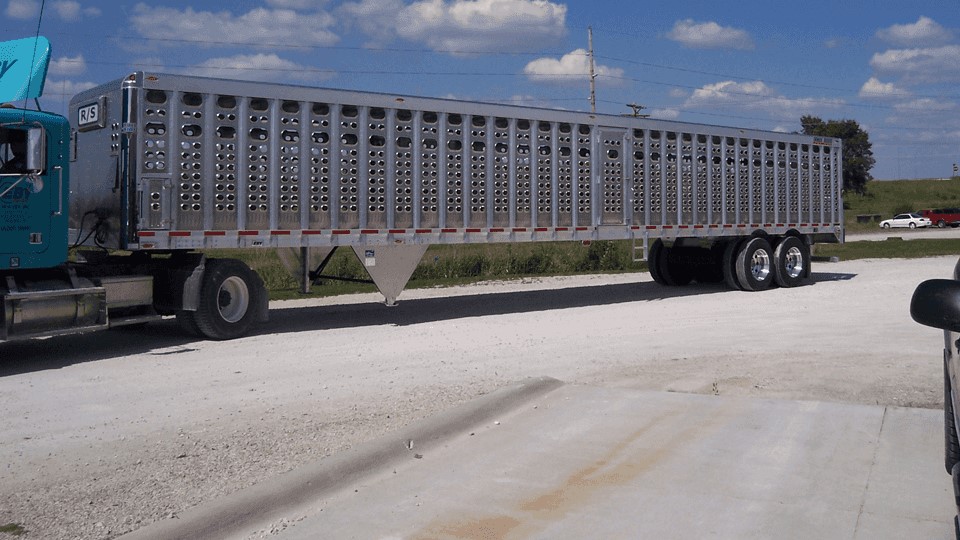
Figure 1 Enclosed Livestock Trailer
An enclosed type of trailer as shown in figure 1 above does not leave the animals in transit exposed to great extends. This is a type of trailer for transporting livestock that offers more protection for the animals while on transit.
If you are looking forward to transport cattle, this is the type of livestock trailer to consider. It is a stronger construction and safer than the other types of livestock trailers.
Two. The Fence Type

Figure 2 Fence Livestock Trailer
The fence type is a cheap and light construction compared to other livestock trailers that you will ever come across out there in the market.
It is designed and built in such a way that it is easy to clean, which is a very important aspect to consider during your purchase. Owing to its design and construction it is commonly used in regions that are not too cold.
Three. The Van Type
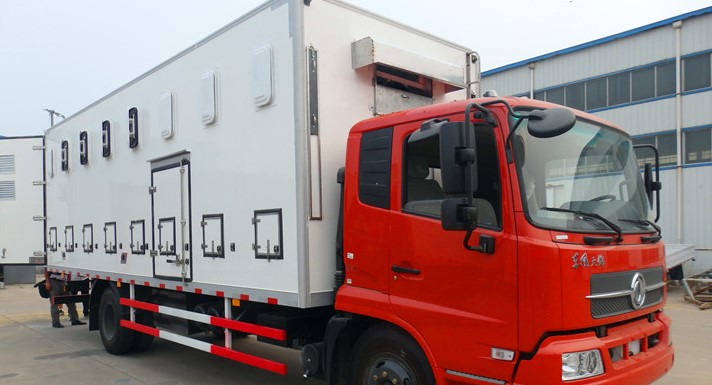
Figure 3 The Van Livestock Trailer
The Van type is designed and made in a way that keeps the cabin temperature stable. This is the type of livestock trailer that you need when transporting animals that need close care and attention especially on the ambient conditions off transportation.
It helps in keeping the animals healthy and free from any illness. This is the type of livestock trailer to use if you are dealing with and transporting for high-profit animals.
Contact us, get more specs now!!
2. Material of Construction
In your choice of livestock trailers, the type of material used for construction is a factor to consider. The livestock trailer can be made of two material types: Aluminum and Steel.
Listed below are details of the value that comes with each type of construction. You can liaise with professionals in the industry to help you make a choice of one type of material construction over the other.
One. Aluminum
With a livestock trailer of Aluminum construction, you will get a light trailer. Most of the van type and enclosed type of livestock trailers are made of Aluminum.
Two. Steel
Steel offers a strong and more rigid livestock trailer. Steel is commonly used in building the fence type livestock trailer.
3. Design and Structure
The Livestock trailer is also available in different types based on the design and structure. Here are the different types you will get based on this classification.
One. Double Or Multi-Floor
The multi-floor livestock trailer provides several levels of livestock loading with the first loading section at the loading and offloading level of animals.
One of the loading happens at an almost ground level and this is the bottommost deck for the livestock trailer.
Additionally, the trailer has a combination of floor panels and interior walls with a central rotating system that provides an interior wall that separates the loading sections.
The rotating mechanism can also lie securely flat and well over the recessed floor in the adjacent ground loading section.
This prevents access to the lower-level floor section of the ground loading section during loading and offloading operations in the first loading point.
It also provides a ramp in the lower-level floor to be used for the next loading section. The ramp is normally adjusted at a front end to be lowered or raised.
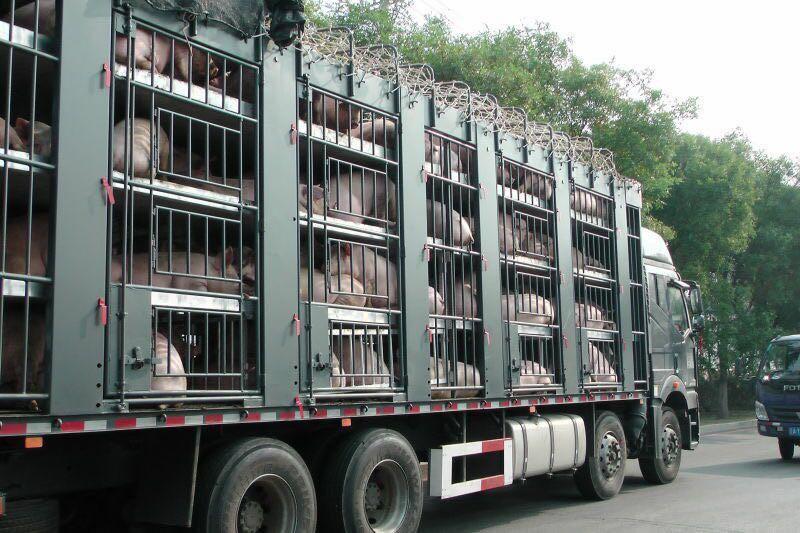
Figure 4 Multi-Floor Livestock Trailer
Due to the many floors, this is the best trailer to transport more animals. If you have a lot of animals to transport, this is definitely the most effective trailer to use.
Contact us, get more specs now!!
Two. Lower Loading Structure
For this type, the rear part is lower than the front section. This type of livestock trailer offers an easy way to load animals.
Commonly considered as a ground loader, the lower loading structure is designed and made perfectly to combine the durability and strength of the construction.
The lowered position eases loading anywhere. This offers great standard features and is available in many options ranging from 34” to 53” in length and a width of 102”.

Three. Insulation Material
Depending on the application and type, livestock trailers may be insulated to control and manage the inside temperature. Here the two main insulation materials used to maintain the temperature of the van type trailer at desired levels.
- Sandwich Plate
This is a simple construction that is easy to establish. The middle layer is made of polyurethane while the outer part is made using fiberglass. The polyurethane material is stuck in between two fiberglass walls and uniformly pressed together.
The trailer walls are normally made of 3/8” plywood hence offering thorough protection against rigorous use. The plywood material is normally wrapped well in polyester resin and then carefully reinforced with woven fiberglass material.
This offers great protection from the external elements. The polyurethane foam makes sure that there is consistent density and homogeneous insulation thorough the floor surface.
There are thermal breaks at the door as well as the threshold is useful in reducing the infiltration and the maintenance of a uniform temperature in the entire cargo section.
The fully insulated floors, walls and ceilings are useful in minimizing any passive transfers of heat and probable leaks occurring at the seams and joints.
This impacts a lot in managing significant temperature discrepancies within the cargo area. Well, the insulation effect could be less compared to other insulation approaches such as those of vacuum insulating plate.
- Vacuum Insulating Plate
For the vacuum insulating plate, the middle section is made of non-Freon polyurethane. The insulating plate is made by way of pressing a machine at high pressure and temperature while leaving the inner section as a vacuum.
In simple terms, this is a vacuum body that is used for providing heat insulation constructed using a superfine glass fiber material.
The outer surface of the vacuum plate is covered using an aluminum foil obstruction bag. After that, there are sealing ports made to the obstruction bag n one side.
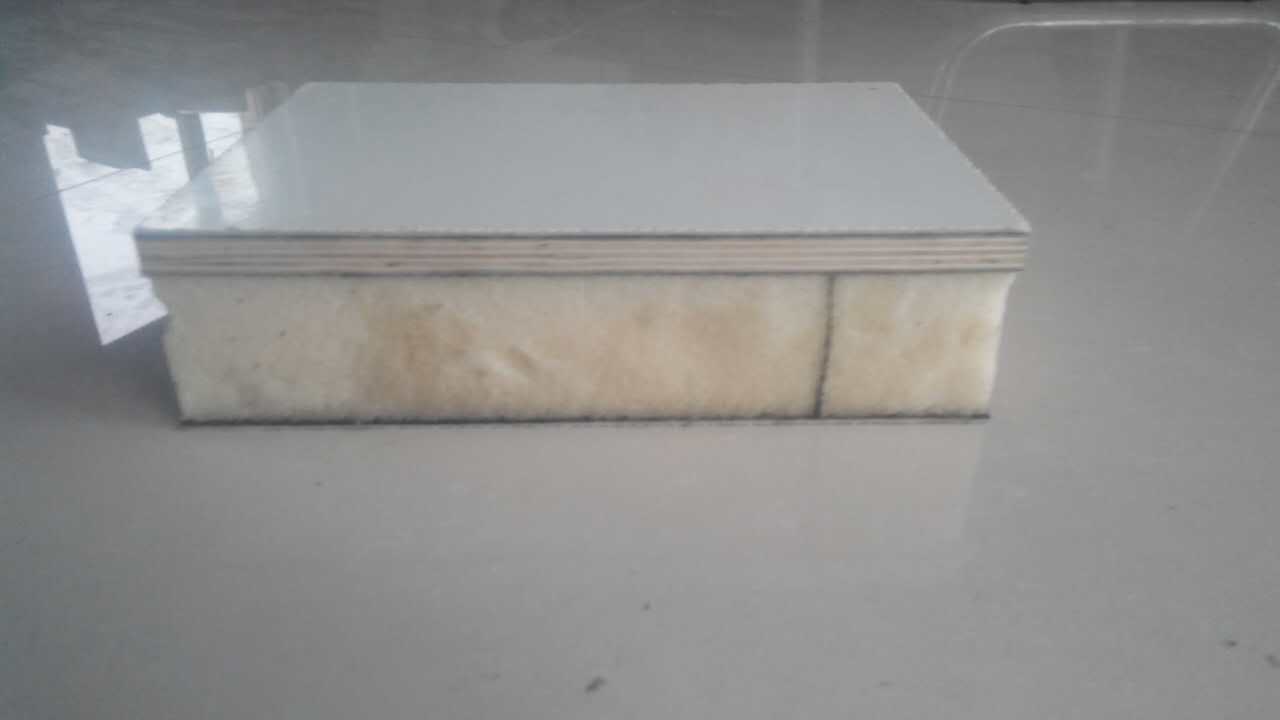
The vacuum heat insulating plate is designed and made in a manner where the sealing ports with one located outside the other. This set up provides an insulation film advantageous in the flowing ways:
- It is thin hence light in weight yet offering high sealing properties
- It provides long spans of heat insulation
- They ensure improved effective volume
- Due to its effectiveness, it has ensured decreased transportation costs and increased transportation
- It’s the perfect choice of high energy conservation needs
Contact us, get more specs now!!
4. How to Ensure the Safe of Animal When Towing the Trailer
Just like with any other cargo type, safety is very important in the transportation of livestock. Towing an animal trailer is very common on ranches and farms.
Also known as stock trailers, livestock trailers move livestock from one location to another especially during animal fairs or when being taken to processing plants.
To get to these various destinations with your animals kept safe and intact, the truck should be able to tow the trailer’s weight together with that of the livestock onboard.
Liaise with the manufacturer to establish the maximum permissible Gross Combined Vehicle Weight (GCVW) that can be loaded on your chosen type of livestock trailer.
There is a GCVW rating normally located in the serial number of the vehicle or provided in the operator’s manual. Remember to factor in the weight of passengers, fuel and cargo when calculating the total weight.
Look up for the maximum tongue weight in the manual. This is the amount of weight of the trailer that presses down on the trailer hitch while using a bumper pull trailer or the bed of the truck in the case of a gooseneck trailer.
Most of the weight ranging from 85-90% must be carried on the axles to allow 10-15% of the total weight on the tongue.
For purposes of safety, checks should be made on both the trailer and the truck to make sure that they working properly. Here is a checklist to ensure safety operations with your livestock trailer.
- Safety chains and latches. Cross check the safety chains and latches together with the cables between the trailer and the truck. Ensure that they are securely fastened together. Again, make sure the ball is the correct size for your trailer type.
- Brakes on the trailer. Do an inspection on the breakaway cable and the entire braking system. It is highly recommended by manufacturers to have an independent brake system for a trailer over 1000 pounds. However, make sure to consider the state regulations required of any brake system in such applications.
- Wheel bearings. On a regular basis, repack the wheel bearings and do a replacement when necessarily.
- Electrical connections and wring. Checks on wiring should be made to ensure they are in good condition. Connectors for trailers must match those of the truck. All lights should be working. Check the turn signals, brake light and the tail lights as well. These checks should be conducted both on the trailer and the truck. All electrical connections should be securely plugged onto the truck.
- Checks for Tires. Assess the state of all the tires and establish whether there is any wear and tear. These checks must also include for the spare wheels. Another thing to check for the tires is whether they have the correct air pressure. Tires should be replaced at least after a period of 5 years in operation.
- Lug nuts. Check the lug nuts and ensure that they are tightened properly from time to time.
- Inspection on the trailer. Checks should include on the floor surface for cleanliness and sturdiness. Should more traction be required, make sure you install rubber matting. Should there be wear and rot on the floor boards, consider replacing them.
- Battery. If your accessories are powered by a battery, make sure that the emergency battery is fully charged and readily available for use.
- Brake controllers. Perform tests o the brake controllers and ensure that you make adjustments as would be required based on the weight of the trailer. Here is how to do it:
- Locate the adjustor for your electric brakes. You will basically find them under the instrument panel of the tow vehicle. The adjustor has a control button (+ or -) and a sliding lever. Make use of the controller when there is a need to increase the braking power (+) when under heavy loading or decrease the braking (-) for lighter cargo.
- After locating the controller, gradually move forward on an even ground and move the tow vehicle transmission to a neutral position. Make use of the slide lever located on the brake adjustor to stop the load through the trailer brakes.
- Should the trailer brakes cause a jerk on the truck, adjust your trailer brakes very high. Lower the power of braking on the trailer to achieve a smooth stop. If the loaded trailer and the truck do not slow down smoothly, the brake adjustor should be controlled to a higher level.
Contact us, get more specs now!!
- Loading a Livestock Trailer
If you don’t follow the right procedure in loading animals into the livestock trailer, it can be frustrating to do so. To have an easy and safe loading process, there are a number of things you can consider doing.
For instance, you can lower the trailer’s rear section to the lowest level possible to enable the livestock step into it without the need to step up.
It is important to remain calm and patient in order not to stress and scare the animals. During the loading process, ensure the following:
- Do an inspection to make sure that there are no sharp objects protruding into the trailer. Repairs to such protrusions should be made to prevent injury to your livestock.
- Weight is well distributed. Allow the heaviest animals to occupy the section supported by the axles’ front. Larger and older animals should be loaded first and then follow up with smaller and younger ones.
- Use slip knots when tying the animals after loading them onto the trailer. Tying inside the trailer should be made at head height.
- It is important to ensure visibility. Animals should be able to see anyone entering and exiting the trailer, when inside the trailer tying or untying them.
- Always be careful about being squeezed and pinned between the animals or the trailer sides and the trailer gate as well.
- Immediately after loading the animals onto the trailer, close the gates and make sure the animals are secure.
- Livestock Trailer on Transit
As the driver is driving along the road, it is important to always maintain a safe speed with the headlights kept on at all times. Stay alert especially when towing a complete trailer.
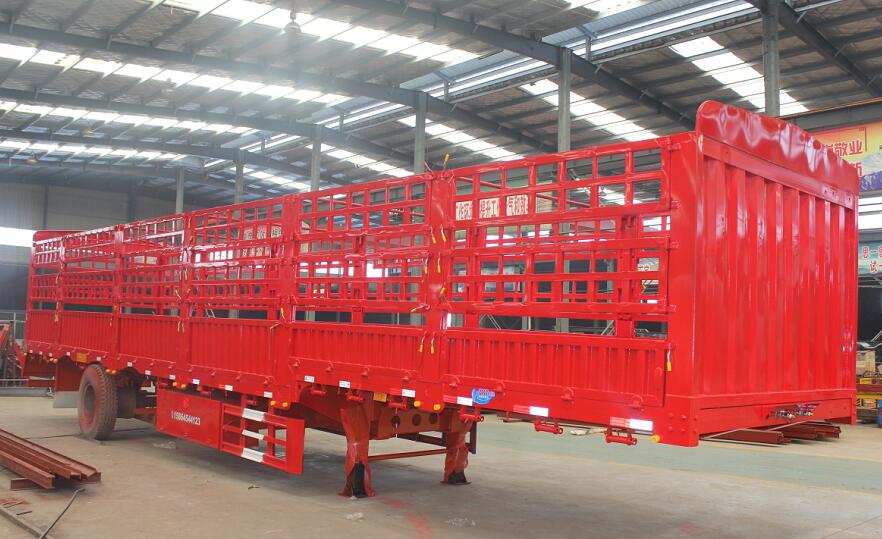
This is because the braking time increases a lot and in that case, a safe distance from the vehicle in front should be maintained.
Be careful when planning the travel and always remember that weather can sometimes delay your plans especially because it affects the animals’ comfort and road conditions.
Don’t lock the trailer while transporting your livestock. This will make it possible for rescue workers to access it in the event of an emergency.
For the safety of your animals ensure that none of them is hanging their heads outside the trailer. They could be harmed by flying objects.
Conclusion
The livestock trailer is a very useful vehicle for livestock farmers and those involved in the livestock industry operations.
Different types of animals can be loaded on these trailers and that is why there are different designs and structures customized to address each of these situations.
If you are dealing with many animals, ensure that that you get a multi-floor trailer for your livestock. This will enhance your efficiency by transporting many animals at ago.
Outlined here are some of the considerations you should make when buying a livestock trailer. The help of a professional during the time of purchase would also be useful especially if you have special considerations to make.

